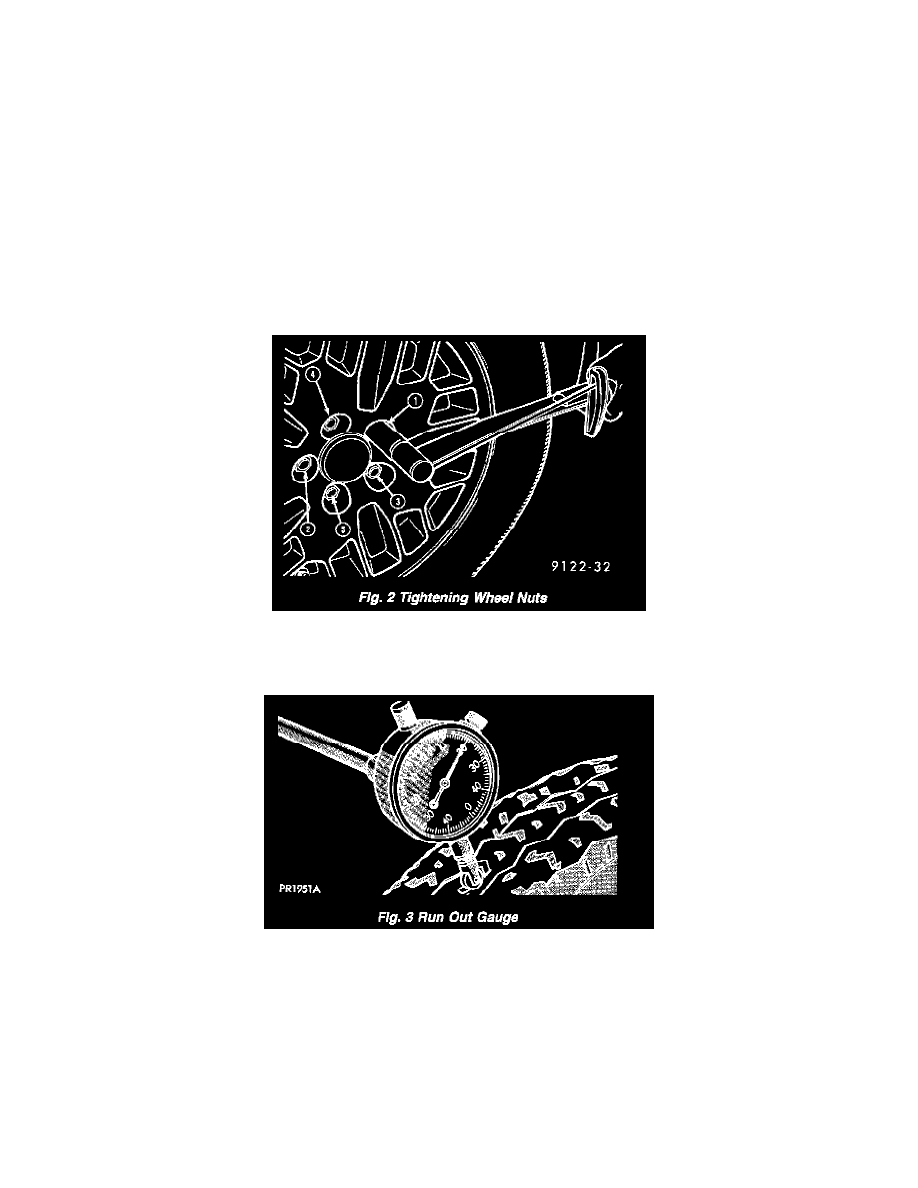Town & Country Van AWD V6-230 3.8L VIN L SMFI (1998)

Wheels: Testing and Inspection
Tire and Wheel Runout
NOTE: Runout should always be measured off the vehicle and on a suitable balance machine.
GENERAL INFORMATION
Radial run out is the difference between the high and low points on the outer edge of the tire or wheel.
Lateral run out is the total side-to-side wobble of the tire or wheel.
Radial run out of more than 0.762 mm (0.030 inch) measured at the center line of the tread may cause the vehicle to shake.
Lateral run out of more than 0.762 mm (0.030 inch) measured at the side of the tire as close to the tread as possible may cause the vehicle to
shake.
Sometimes radial run out can be reduced by relocating the wheel and tire on the wheel studs (See Method 1). If this does not reduce run out to an
acceptable level, the tire can be rotated on the wheel. (See Method 2).
Method 1 (Relocate Wheel On Hub)
Check accuracy of the wheel mounting surface; adjust wheel bearings.
Drive vehicle a short distance to eliminate tire flat spotting from a parked position.
Fig. 2
Verify all wheel nuts are properly torqued.
Fig. 3
Use run out gauge D-128-TR, or equivalent to determine run out.
Relocate the wheel on the mounting studs, two studs over from the original position.
Retighten wheel nuts until all are properly torqued. This will prevent brake distortion.
